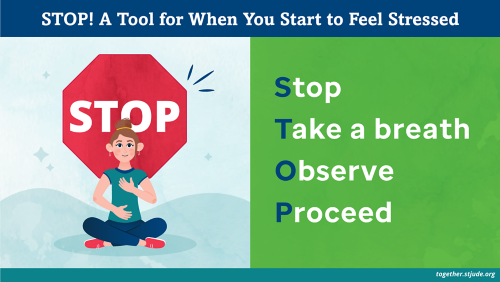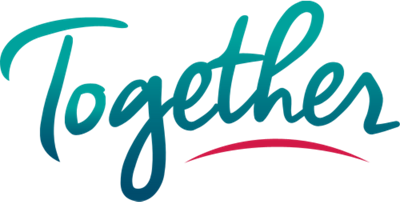Self-Care During A Pandemic: Lessons Learned After 1 Year of COVID-19
It has been just over a year since the start of the COVID-19 pandemic. It marks one year of lost jobs, remote learning, and increased stress and worry.
In talking with many parents of children with cancer, I have heard a similar response. What the world experienced in 2020 is what parents and children with cancer often face in their journey. Fear, uncertainty, isolation— these are all common feelings and emotions that parents face when their child has cancer.
One year later, there is a glimmer of hope with new vaccines and better treatments. The pandemic is not over, but there may be a light at the end of the tunnel. In thinking about this past year, there were many people that I worked with who continued to work with a smile in their eyes and hope in their hearts despite the hardships.
These people had one thing in common. They all had found ways to remain resilient in their time of trouble.
What is resilience?
Psychologists define resilience as “the process of adapting well in the face of adversity, trauma, tragedy, threats or significant sources of stress— such as family and relationship problems, serious health problems or workplace and financial stressors.” Resilience is not only a “bouncing back” from challenges but also includes deep personal growth.
Resilience does not mean that people will never face hard times or that they are immune to sadness. In fact, some of the most resilient people are those who have gone through major trauma and challenges. It is also not a specific trait that only certain people can possess.
Resilience is a pattern of thoughts and actions that anyone can develop through learning and practice.
How to build resilience in your life:
The American Psychological Association provides four key features to foster resilience. These include connection with other people, wellness, healthy thinking, and finding meaning. These four tools are powerful ways to build resilience during traumatic events, whether they be pediatric cancer or a global pandemic.

This image was taken before the COVID-19 pandemic
1. Building connection with others
First, we must continue to build our relationships with other people including family and friends. This can be very difficult in the midst of a pandemic. However, finding time in thoughtful moments with loved ones can have a profound impact on our well-being.
2. Wellness
Second, it is vital we take care of our bodies and minds. There is a strong connection between our physical and mental health and by taking care of our bodies we also take care of our minds. This includes regular exercise, getting enough sleep, and eating well, among others. Also, we should find time to unwind and unplug from the world. Using mindful or spiritual tools such as meditation or prayer can help promote wellness.
3. Healthy thinking
Third, those who are resilient have a unique way of thinking about the world around us. This includes being hopeful and looking for the good in the world. They also keep things in perspective and avoid, as my wife likes to call it, “awfulizing,” in which we think the worst in people and the world. Those who are resilient find a way to maintain hope in a way that helps them move forward despite their hardships.
4. Making meaning
Finally, one of the most important tools in our toolkit is finding purpose in our trials. This meaning-making can look different for everyone but often includes finding ways to help others who may also be going through a hard time. Also, those who are resilient find ways to see how they have grown and changed through their journey, which promotes a sense of greater self-worth and self-respect.
STOP!
There is a tool that I like to use during my busy days in the hospital, which helps me stay grounded. The tool is known as S.T.O.P. This tool is a quick way for me to reflect and recover from the chaos of work and life. I do this a few times a day when I see that I am starting to get stressed.

The tool is known as S.T.O.P. This tool is a quick way for me to reflect and recover from the chaos of work and life.
S - The S stands for Stop. This means putting down whatever we are doing and take a minute to relax.
T - The T is for Take a few breaths. Taking a few breaths is a great way to focus on something other than the million tasks or challenges you are facing and focus on your body. This will help you ground and relax.
O - The O is for Observe. This means we observe our thoughts, feelings, and emotions and observe how they influence our mood and stress. Also, we should observe our body and how we are sitting, standing, or moving. This observation helps us find where we are holding our stress or worry.
P - Finally, after doing these steps we move to the letter P. It stands for Proceed. After taking these brief moments to be mindful, I have found I am able to enter a patient room, go to a meeting, or deal with my own challenges with more purpose and hope.
Conclusion
This past year has been difficult beyond what we have imagined. However, we have also had the opportunity to learn new skills that will hopefully help us as we move into the future.
By building our connections with others, taking care of our minds and bodies, reframing our thinking, and finding purpose in our situations, we can build resilience in this year to come.
I also hope that you might be able to use the STOP tool to take a moment throughout your day to reframe and reset when you start to find yourself stressed or worried. This won’t change the world around us or the challenges we face, but hopefully it will help strengthen us to walk through this journey we call life.





